Welcome to the delightful world of small garden wonders, where even the tiniest spaces can bloom with beauty and life! Whether you’re just beginning your gardening journey or have years of experience, this guide is your ticket to discovering the joy of cultivating a vibrant oasis at home. Our carefully curated list of the best plants for small gardens promises to transform your space, no matter how limited, into a thriving sanctuary of nature’s finest offerings.
Here, you’ll find a selection of resilient, easy-to-care-for plants that are perfectly suited for compact environments. These choices are not only visually stunning but also bring a host of practical benefits, from purifying the air to boosting your mood. By following our expert tips and insights, you’ll gain the confidence to nurture these green companions, ensuring your small garden becomes a source of pride and serenity. Let’s embark on this exciting journey together and watch your gardening dreams flourish!
Dwarf Sunflower (Compact and Vibrant)
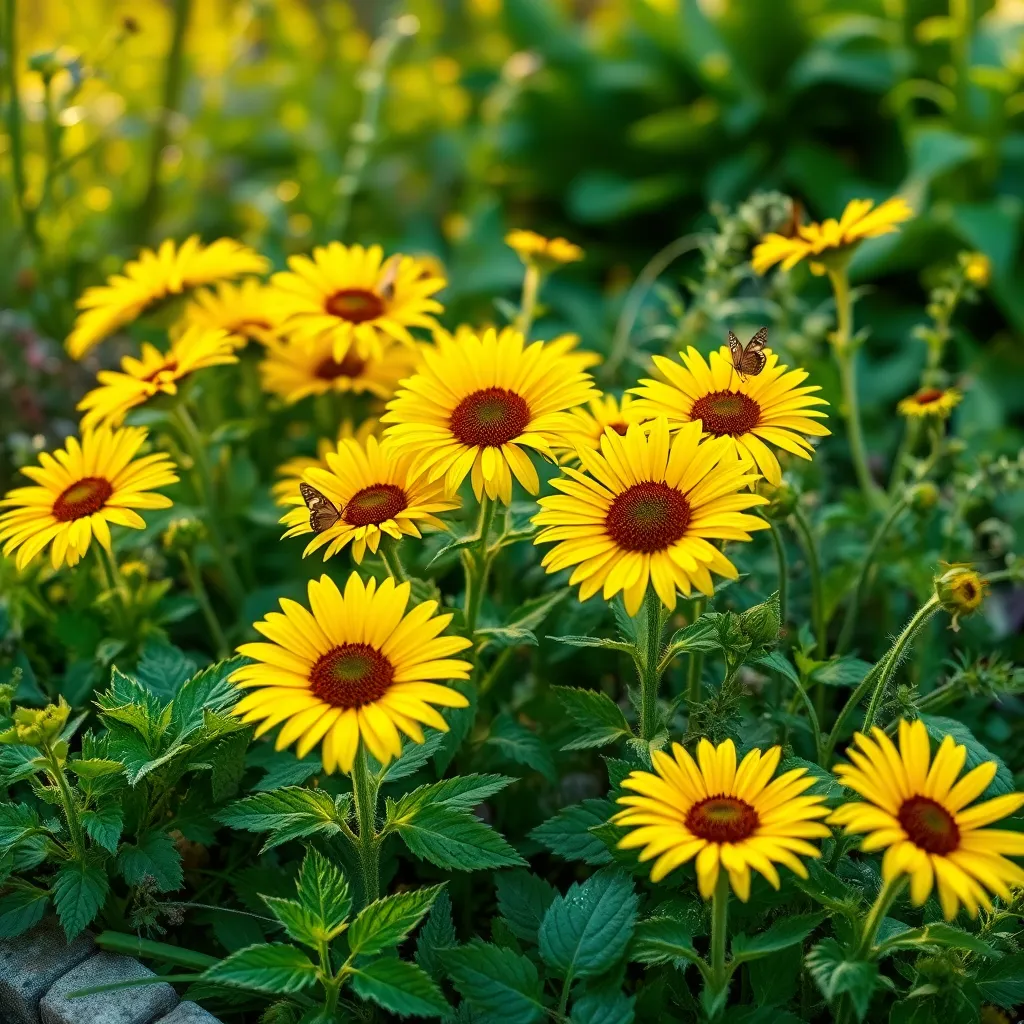
For those with limited garden space, dwarf sunflowers are a perfect choice, offering a burst of color and charm without overwhelming your area. These compact varieties typically reach only 12 to 36 inches in height, making them ideal for containers or small garden beds.
Planting dwarf sunflowers is quite straightforward, as they thrive in well-drained soil with plenty of sunlight. To ensure optimal growth, place them in a location that receives at least 6 to 8 hours of direct sunlight per day.
Watering is crucial, especially during the initial growth phase, so aim to keep the soil consistently moist but not soggy. As the plants establish, they become more drought-tolerant, but be sure to water them deeply once a week to promote healthy root development.
To enhance blooms and maintain plant health, consider using a balanced, all-purpose fertilizer every few weeks. For those looking to take their gardening skills a step further, deadheading spent flowers can encourage more blooms and extend the flowering period.
Herb Spiral (Space-Efficient Aromatics)

An herb spiral is a brilliant way to grow a variety of aromatics in a small space, making it perfect for compact gardens. This vertical design maximizes growing area by allowing different herbs to thrive at varying levels, each with its own specific microclimate.
Constructing an herb spiral is straightforward and rewarding. Start by creating a spiral structure using bricks, stones, or any other durable material that can withstand weather conditions.
Fill the spiral with a well-draining soil mix, such as a blend of garden soil, compost, and sand. This ensures that your herbs receive the nutrients they need while preventing waterlogging, which is critical for most aromatic plants.
Plant herbs that suit the conditions of each level: place sun-loving herbs like rosemary and thyme at the top, where they’ll receive the most sunlight. More water-loving herbs like basil and mint can go at the bottom, where moisture tends to accumulate.
Patio Tomato Varieties (High Yield in Pots)
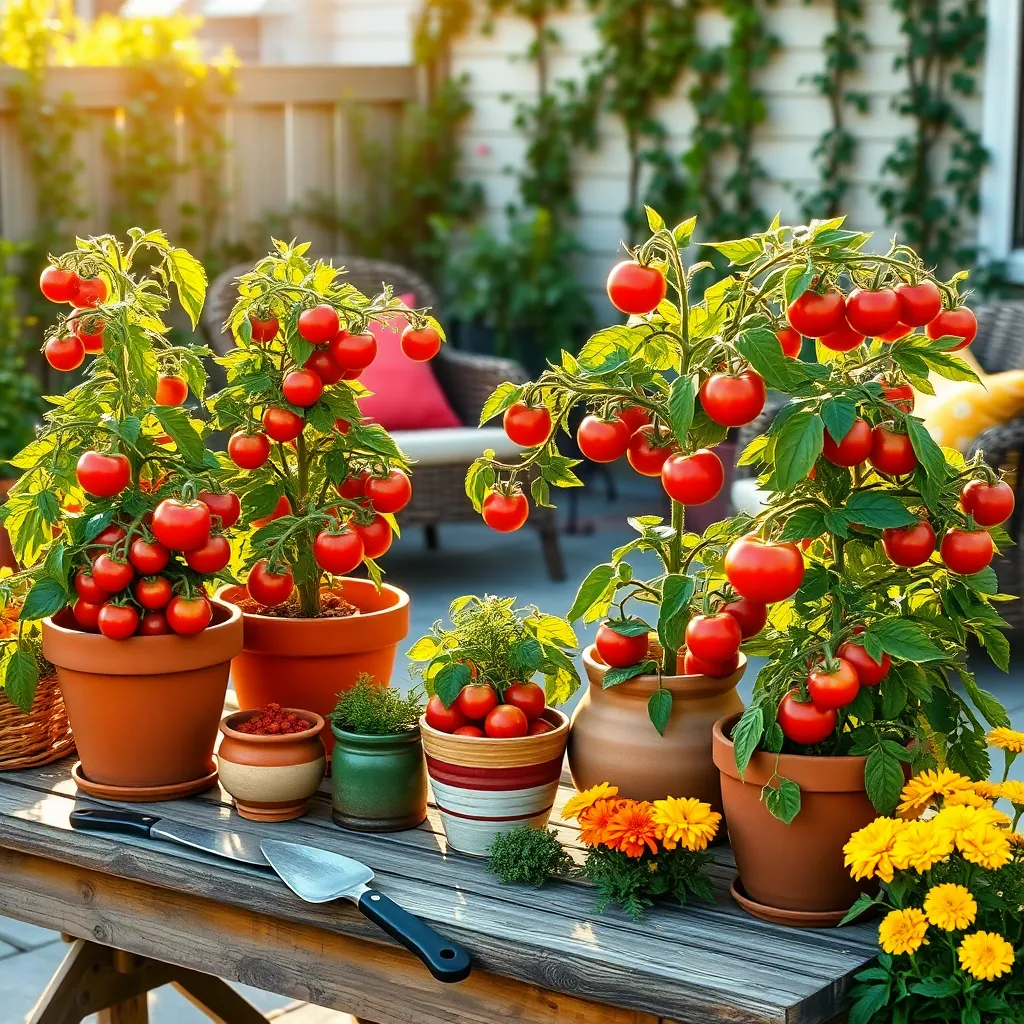
Patio tomatoes are a fantastic choice for small gardens, offering high yields even in limited spaces. These varieties are specifically bred to thrive in containers, making them perfect for patios and balconies.
The key to success with patio tomatoes is choosing the right variety. Look for determinate types like ‘Bush Goliath’ or ‘Patio Princess,’ which are compact and prolific.
When planting, use a pot that is at least 18 inches in diameter to provide ample room for root growth. Fill the pot with a high-quality potting mix that has good drainage, and incorporate a slow-release fertilizer for continuous nutrition.
Watering is crucial for maintaining healthy plants, especially in pots where soil dries out more quickly. Ensure your tomatoes receive consistent moisture, ideally watering when the top inch of soil feels dry.
For those seeking to maximize yields, consider staking or caging your patio tomatoes to support the branches laden with fruit. Pruning is less critical for determinate varieties, but removing any yellowing leaves can help improve air circulation and plant health.
Vertical Strawberry Planters (Fruitful and Fun)
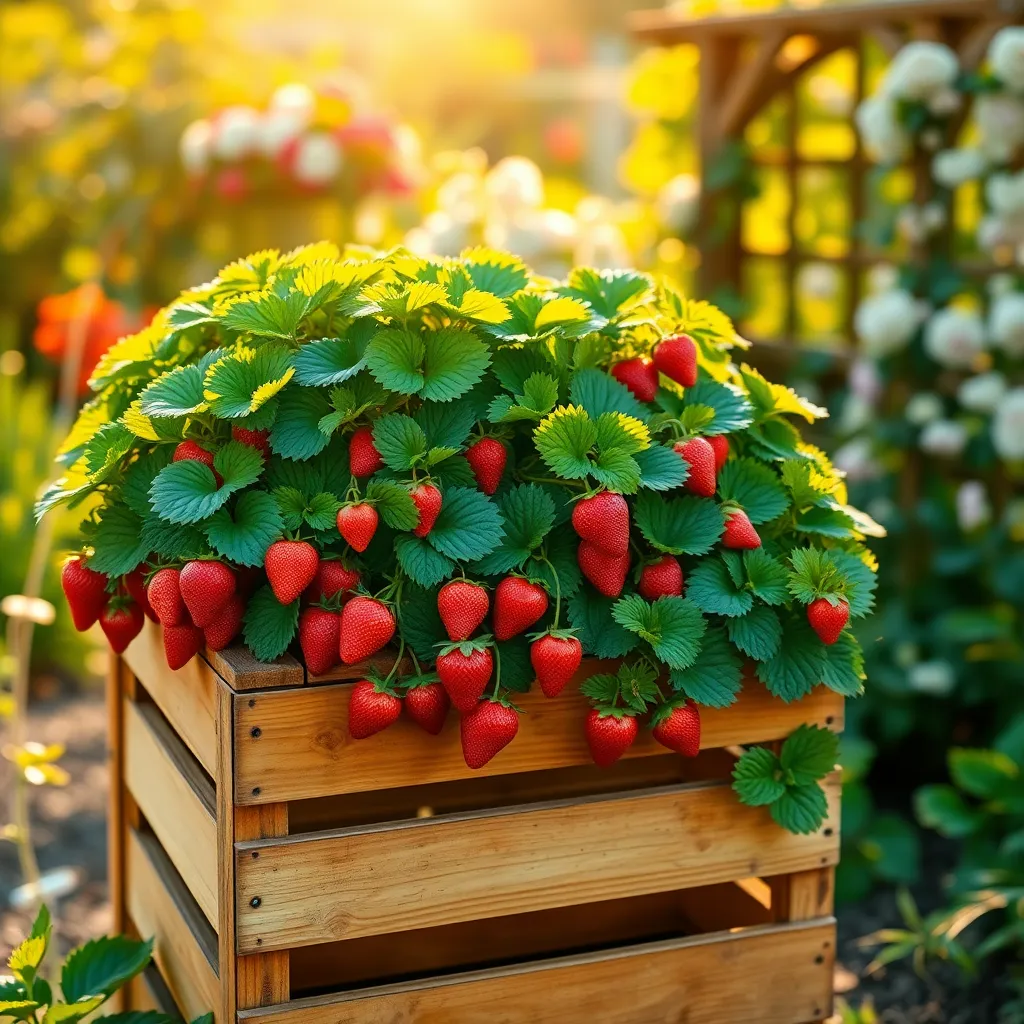
Vertical strawberry planters are an excellent solution for gardeners with limited space. They allow you to grow strawberries upward, maximizing your yield without needing much ground area.
To start, choose a sunny spot since strawberries thrive with at least six to eight hours of sunlight daily. It’s crucial to use a well-draining potting mix, enriched with organic matter, to support healthy root growth.
Watering is key—ensure your strawberries receive consistent moisture but avoid waterlogging, which can lead to root rot. Consider using drip irrigation or self-watering systems to maintain the right moisture level without overwatering.
For more experienced gardeners, try interplanting with herbs like basil or mint to naturally repel pests and enhance the flavor of your strawberries. Regularly check for pests such as aphids and slugs, and address these swiftly with organic solutions like neem oil or hand-picking.
Dwarf Meyer Lemon Tree (Citrus in Containers)
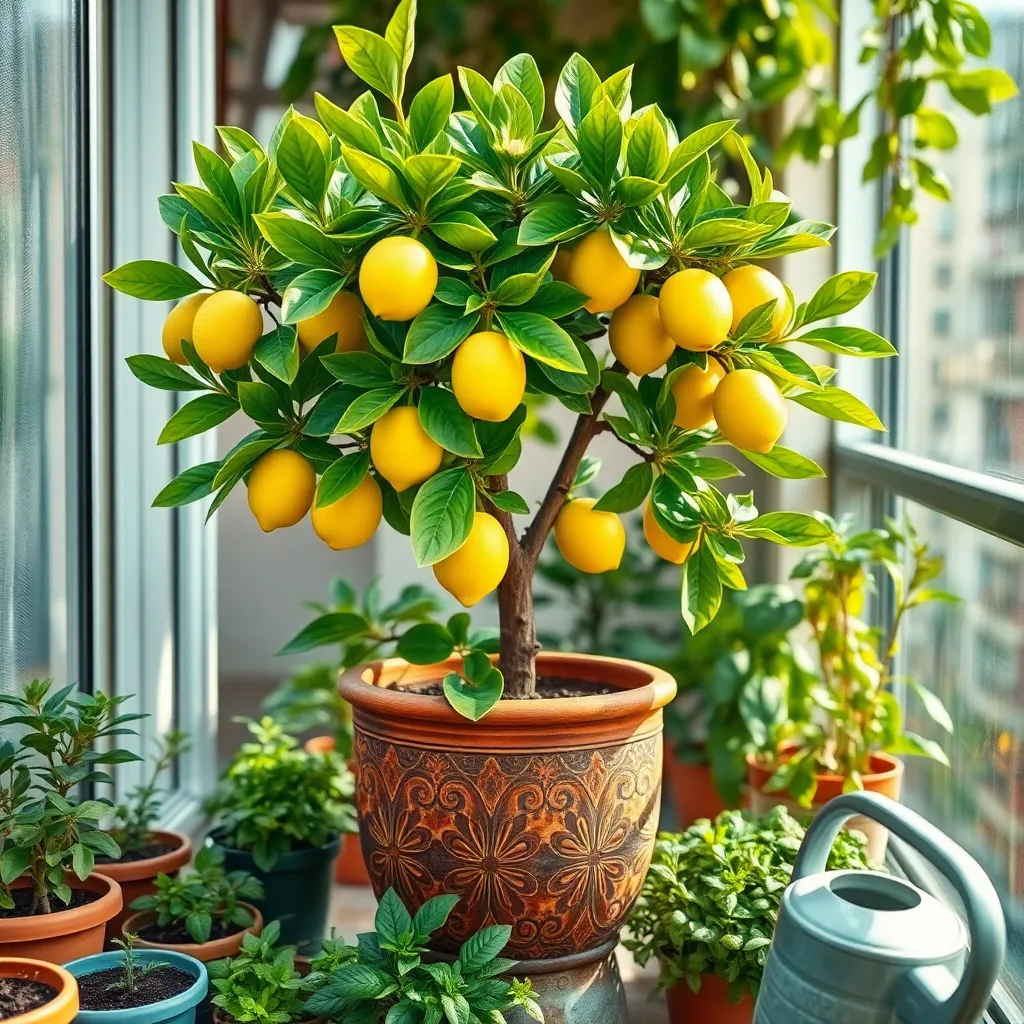
The Dwarf Meyer Lemon Tree is a fantastic choice for small gardens, especially when grown in containers. This compact citrus tree is known for its sweet, juicy lemons and can thrive indoors or on patios, adding a delightful citrus fragrance to your space.
For optimal growth, place your Dwarf Meyer Lemon Tree in a location that receives at least 6-8 hours of direct sunlight daily. If you live in a cooler climate, consider moving the tree indoors during winter months to protect it from frost.
When planting this tree in a container, ensure it has a well-draining soil mix, such as a blend of potting soil and perlite or sand. Regular watering is crucial, but be careful to allow the top inch of soil to dry out between waterings to prevent root rot.
Fertilize your Dwarf Meyer Lemon Tree with a balanced citrus fertilizer every two months during the growing season for the best fruit production. Advanced gardeners might consider pruning the tree in early spring to maintain its shape and encourage new growth, ensuring a plentiful lemon harvest.
Succulent Ground Cover (Low-Maintenance Beauty)
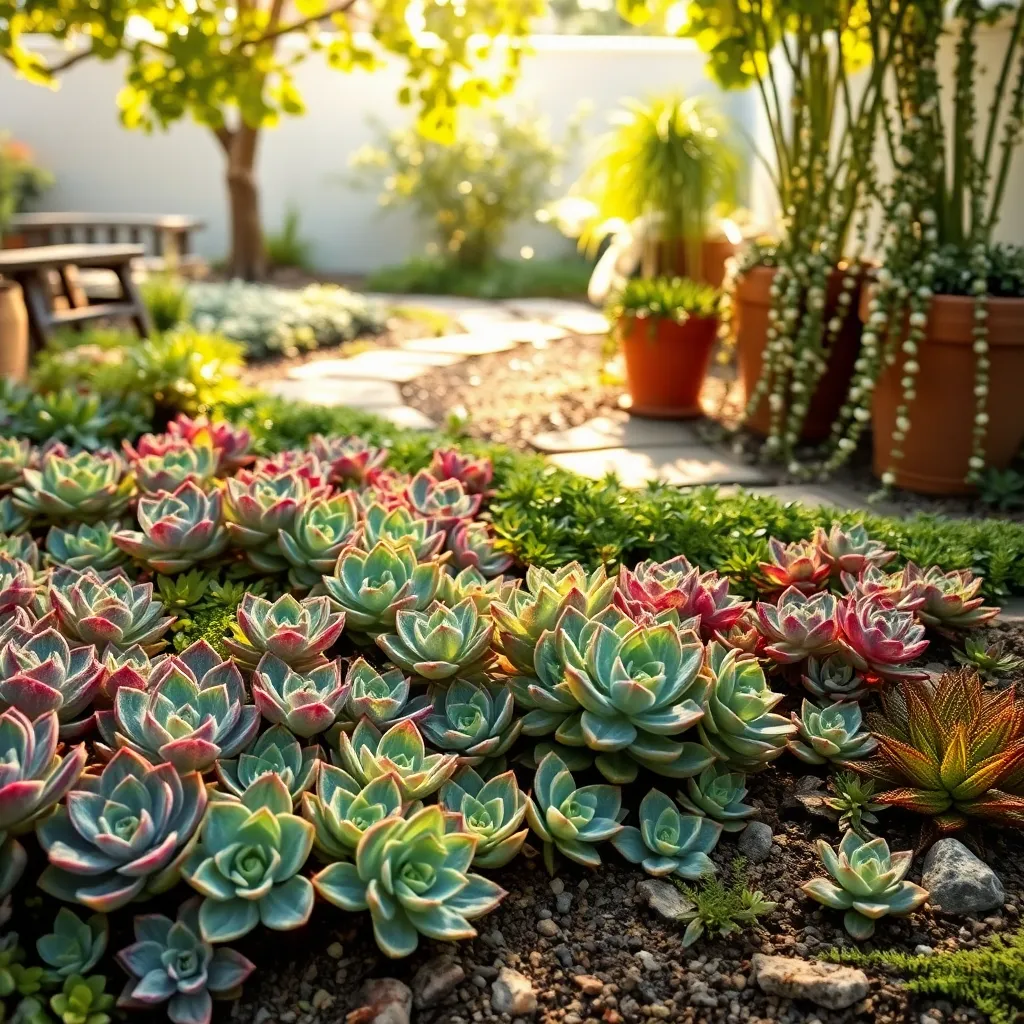
Succulent ground covers offer a low-maintenance solution for small gardens, providing lush, vibrant coverage that requires minimal care. These plants are especially suited for gardeners seeking beauty without the constant upkeep, thriving in well-drained soil and full sun.
When selecting succulent ground covers, consider varieties like Sedum and Delosperma, which are known for their resilience and drought tolerance. Water sparingly, allowing the soil to dry completely between waterings to prevent root rot, a common issue with overwatered succulents.
For optimal growth, ensure your succulents are planted in a soil mix designed for cacti and succulents, which provides the drainage they need. Add a layer of gravel or small stones on top of the soil to improve drainage and enhance the aesthetic appeal of your garden.
Advanced gardeners might experiment with combining different succulent varieties to create a tapestry of textures and colors. Regularly remove any dead leaves or debris to keep the plants healthy and promote airflow, which helps prevent pests and diseases.
Compact Hydrangeas (Bold Blooms in Small Spaces)
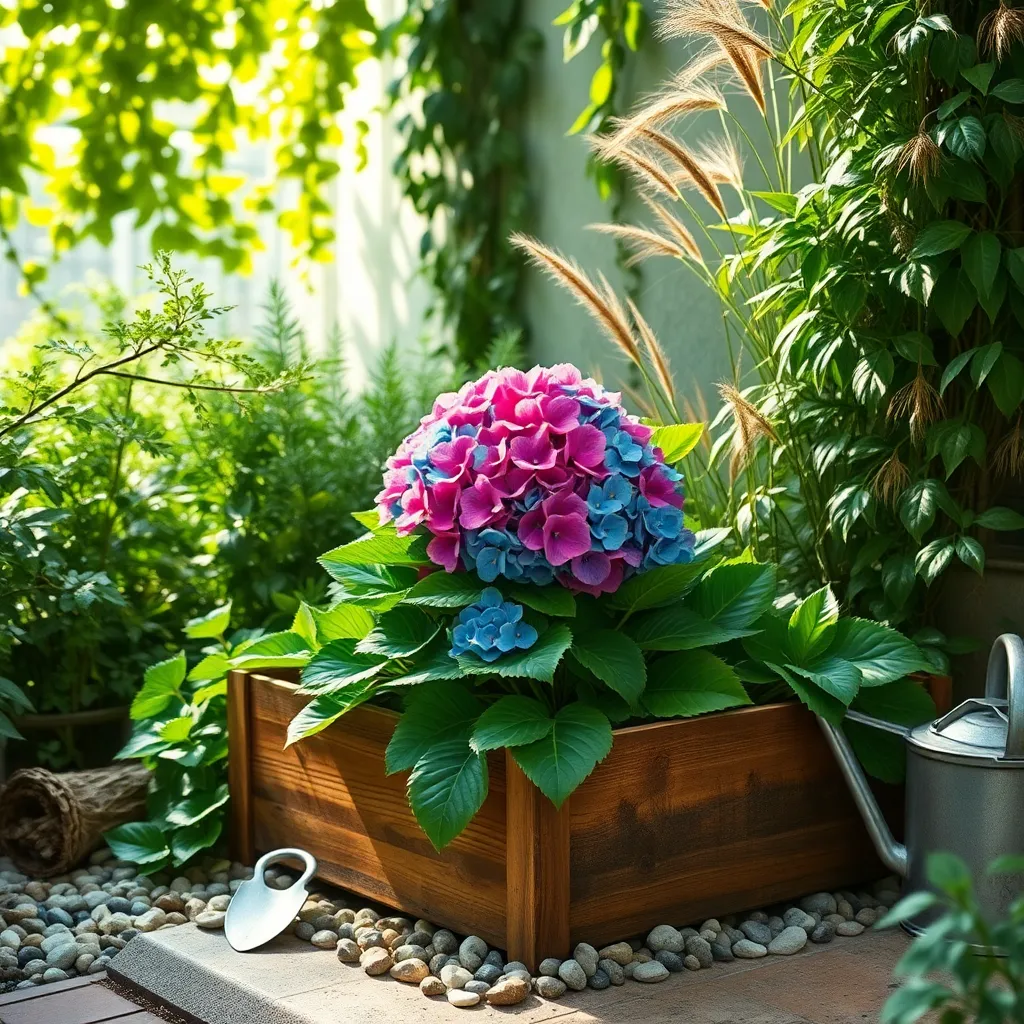
Compact hydrangeas offer a stunning solution for gardeners with limited space, bringing vibrant blooms to small gardens. These plants thrive in partial shade, making them perfect for areas where sunlight might be limited.
For soil, aim for a rich, well-draining mix that retains some moisture but never becomes soggy. Regular watering is essential, especially during dry spells, to keep the hydrangeas healthy and blooming.
Pruning is straightforward: trim back the stems after flowering to maintain shape and encourage new growth. For gardeners seeking specific bloom colors, adjusting soil pH can be a fun experiment—acidic soil turns flowers blue, while alkaline soil results in pink blooms.
Compact hydrangeas are low-maintenance, yet they reward you with bold blooms throughout the summer months. Fertilize lightly in the spring with a balanced, slow-release fertilizer to support their growth and vibrant flowers.
Conclusion: Growing Success with These Plants
In exploring the lush potential of small gardens, we’ve uncovered seven relationship-enhancing plants: Lavender for its calming presence, Roses to symbolize love, Jasmine for its romantic allure, Basil for its nurturing qualities, Mint to refresh and rejuvenate, Aloe Vera for healing, and Succulents for resilience and growth. Each plant offers a unique lesson in nurturing love, patience, and connection, reminding us that relationships, much like gardens, thrive with care and attention.
As your next step, why not choose one plant that resonates most with your current relationship journey and plant it in your garden or a pot? This simple act can serve as a living reminder of the qualities you wish to cultivate in your relationships.
Be sure to bookmark this article as a steady resource for nurturing both your garden and your relationships. As you watch your plants grow, remember that successful relationships are built on continual growth, understanding, and adaptability. Embrace this journey with enthusiasm and watch your bonds flourish, much like a well-tended garden. Your dedication today sows the seeds for a thriving relationship tomorrow.







